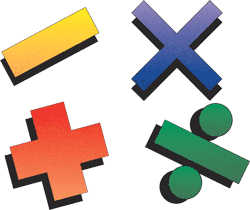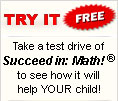We Have to Make Math Problems for Kids Interesting, Fun and Practical!
 The math assignments your kids get from their teachers at school can fairly easily be separated into two divisions. There are math problems the kids hate, procrastinate on doing and often do poorly. And then there are math problems that kids love to do and cannot get enough of because they are so fun. Many parents never see that second kind of math problems but they are available for teachers and parents to use. The more we engage the minds of young people with the second kind of math problems, the more success can be achieved in getting the young people excited about math.
The math assignments your kids get from their teachers at school can fairly easily be separated into two divisions. There are math problems the kids hate, procrastinate on doing and often do poorly. And then there are math problems that kids love to do and cannot get enough of because they are so fun. Many parents never see that second kind of math problems but they are available for teachers and parents to use. The more we engage the minds of young people with the second kind of math problems, the more success can be achieved in getting the young people excited about math.
Of all of the academic areas most kids take on in their elementary and secondary school careers, it is math that seems to be the greatest challenge to most kids. While some students have a natural affinity to math, others have to work to get good at it. Part of the reason that it just takes extra work to conquer mathematics as a discipline.
The teaching as well as the problems that are given as homework stay at a high level of abstraction which means that kids struggle to see the value of what they are doing learning math. And without real life application problems, students fail to “connect” to math in a practical way.
This is why the more teachers or parents look for ways to make math interesting, fun and practical, the more students will be able to apply what they are learning in school and make those math principles part of their daily life. When that happens, students often go through a sudden transformation from kids that hate math and score poorly in those classes to kids that are excellent at math at an academic level. In many cases, those students that were doing poorly were only reacting badly to that first kind of math problem. If using creative and well thought out math problems that really engage the students surfaces some real math aptitude in some of those students that where were failing before, that’s a great result from working a little harder at the craft of teaching.
The “good kind” of math problems can take on many forms and use many methods. You can use story problems, math games and situations in real life where the math concepts being learned come up in everyday situations. The key to making math problems interesting and fun is to introduce ways to make them realistic and take them from theoretical math to applied math in situations. Even games where math is a big part of winning create a compelling need to use the math that a page full of abstract math problems cannot replicate.
